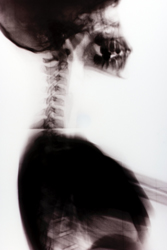Software imaging of muscle construction
The ability to clearly visualise musculo-skeletal structures enhances our understanding of human functional anatomy. An accurate three dimensional image of anatomical objects can be an indispensable diagnostic tool for a number of medical fields but also a roadmap for more efficient biomedical engineering. To address the rising need for a better look into our muscle construction, the MULTISENSE project has developed user friendly interfaces that input data from a multitude of possible sensors. These essentially output a patient-specific musculoskeletal model. A haptic interface for example, interfaces the user via the sense of touch by applying pressure or vibrations to the user. Such an interface can be extremely useful in simulating palpatory diagnosis. Additionally, the MULTISENSE project partners realised that such multi-modal and multi-sensory interfaces would be more attractive to medical professionals if the input data are clinically relevant. Computed tomography (CT) scans are an excellent example of relevant data. These scans are created from the reflection of X-rays (usually) and provide a visualisation of human anatomy. For CT scans as input data, the MULTISENSE project partners have successfully developed a man machine language (MML), an interface, capable of creating musculo-skeletal models. This MML pre-processing unit obtains bone, muscle and skin surface structure from a patient's CT scan. Moreover, the developed software application supports the Digital imaging and communications in medicine (DICOM) format, which includes a standard file format definition and a network communications protocol for medical information processing. Combining a virtual palpation procedure with an advanced operation that curves tissue surfaces to the desired shape, MULTISENSE project partners can now provide us with an accurate musculo-skeletal atlas.







